BREAKING | Made in America: Peter Thiel’s $50M Bet on American Nuclear Fuel w/ General Matter
Scott Nolan, Founder & CEO (& Partner at Founders Fund)
Scott Nolan, General Matter
Scott Nolan, Founder & CEO of General Matter and Partner at Founders Fund, joins Sourcery to break down America’s urgent need to rebuild its nuclear fuel supply chain. With $50 million in funding led by Founders Fund, General Matter is developing U.S.-based production of HALEU (high-assay low-enriched uranium), the nuclear fuel critical for powering next-generation reactors.
→ Listen on X, Spotify, YouTube, Apple
And while Founders Fund rarely incubates companies, General Matter joins a short list alongside Palantir and Anduril—all built with a private-sector-first approach to solving large, government-scale problems, and all found a way to uniquely enable the private & public sectors to work together.
As part of the recent investment, Peter Thiel, Founders Fund Partner & billionaire investor, is joining the board—a notable move for Thiel, who stepped down from Facebook’s board in 2022 & rarely takes on new board roles beyond his long-standing position at Palantir.
Notable Mention: General Matter was selected by the DOE as an awardee in both its LEU and HALEU enrichment acquisition programs (more below).
In this quick episode, we unpack how decades of policy decay left the U.S. with under 0.1% of global enrichment capacity, and why AI demand and geopolitical tensions are reigniting the race for clean, scalable energy.
Nolan shares how General Matter is applying a “SpaceX x Palantir” playbook to reindustrialize the U.S., from assembling a cross-functional engineering team to securing government contracts and navigating executive orders. We dive into the HALEU bottleneck, AGI power demand, reactor deployment timelines, & the energy arms race with China—& why enrichment is the unlock for nuclear to become the cheapest, safest, & most scalable baseload energy source.
This conversation is part of Sourcery’s “Made in America” Mini-Series recorded at the Reindustrialize 2025 Summit.
DEEP DIVE BELOW ⬇️ ☢️
Highlights
SpaceX/Palantir/Anduril Playbook: Blending industry veterans with startup talent to accelerate execution: “1/3 incumbents, 2/3 Silicon Valley engineers”
America’s Enrichment Deficit: The U.S. currently supplies less than 0.1% of global nuclear fuel enrichment, with 25% of its supply still coming from Russia.
General Matter’s Mission: Founded in 2023 to make enrichment affordable & scalable, enabling nuclear to become the lowest-cost baseload power.
AI Energy Demands: By 2030, AI is projected to consume the equivalent of today’s entire U.S. power grid, making energy production the bottleneck.
Executive Orders & Industrial Strategy: Recent U.S. government actions aim to re-regulate nuclear, fast-track licensing, and quadruple nuclear output by 2050, backed by DOE, DOD, and NRC.
Brought to you by:
Brex—The modern finance platform, combining the world’s smartest corporate card with integrated expense management, banking, bill pay, and travel.
Turing—Turing delivers top-tier talent, data, and tools to help AI labs improve model performance, and enable enterprises to turn those models into powerful, production-ready systems. Visit: turing.com/sourcery
Kalshi—The largest prediction market & the only legal platform in the US where people can trade directly on the outcomes of future events (sports, politics, weather, AI, etc).
Fourthwall—The #1 way to sell merch online — Fourthwall is the easiest way to launch a fully branded merch store—used by big brands like MKBHD, Acquired, & even the Smithsonian. 100+ products. No upfront cost.
Timestamps
(00:00) U.S. Nuclear Resurgence
(00:56) Why General Matter Was Founded
(02:49) Making Nuclear The Cheapest Baseload Energy
(04:00) Enrichment And Fuel Process Breakdown
(05:16) Decline Of U.S. Enrichment Capacity
(07:26) Building General Matter & SpaceX/Palantir Playbook
(09:55) Skunkworks Team: Nuclear Experts + Generalist Engineers
(11:11) Breakdown Of The Four Executive Orders
(16:35) Geopolitics, GDP, & The China Energy Gap
(21:14) End Of Stranded Assets & AI’s Power Bottleneck
(24:40) AGI & Software’s Role In Nuclear Deployment
(31:13) General Matter’s 12–18 Month Milestones
Spice & Uranium
Same Resource, Different Universes
First, let’s put this in terms everyone can understand. Spice & uranium are effectively “same-same, but different.” In Dune, spice (melange) is the most valuable substance in the galaxy, fueling space travel, economic power, & political control. Entire civilizations rise & fall over access to it. It’s rare, tightly controlled, & essential to progress.
In our world, uranium, especially enriched forms like HALEU (explained below), is the closest real-world parallel. Like spice, it’s the enabling ingredient behind a critical frontier: in this case, baseload energy, nuclear propulsion, and the future of AI-scale computing. Without it, next-gen nuclear reactors can’t run, and the global push for clean, reliable energy falters.
Just as spice powers interstellar navigation in Dune, uranium powers national energy sovereignty, and whoever controls it, controls the pace of innovation and security.
Both are high-stakes, geopolitically sensitive, and at the center of their respective energy arms races. In Dune, control over spice means control over destiny. In the 21st century, control over uranium enrichment may determine which nations lead the next industrial and AI revolutions.
Okay.. cool. Got it? Now back to the show.
Enrichment, Made in America
“American progress requires nuclear energy
The U.S. pioneered nuclear: the safest form of baseload power and the only emissions-free, geography-agnostic source of energy. But self-imposed limitations slowed our progress, reducing our prosperity. Today’s world requires us to once again lead in nuclear energy.”
How General Matter Plans to Rebuild America's Nuclear Fuel Base
The U.S. once dominated the global nuclear fuel market, responsible for roughly 65% of enrichment during the Cold War. Today, that number has collapsed to <0.1%. “We’re here now with the U.S. doing less than 0.1% of global enrichment,” says General Matter CEO Scott Nolan. “It’s effectively R&D capacity... and we’re completely relying on foreign state-backed entities.”
While nuclear still supplies about 20% of the U.S. power grid, domestic production has stagnated for decades. Meanwhile, China has aggressively expanded—doubling its grid capacity since 2010 through coal and nuclear, with plans to triple it by 2030. The contrast is stark: as China races ahead, America’s grid remains flat.
Public skepticism, shaped by Cold War fears and misguided legacy incidents like Three Mile Island (no one died), has long stalled progress.
But now that’s changing. With electricity demand expected to double by the end of this decade, driven by the explosive growth of AI & data centers, there’s growing bipartisan urgency to scale clean, reliable, 24/7 power. “Nuclear is not just safe,” Nolan says. It’s the safest form of baseload energy. No carbon, no particulate emissions, and it’s scalable.
See excerpt from our piece: Current State of Global Chip Supply, Power Constraints, & Competition
Enrichment 101: What It Is & Why It Matters
Uranium enrichment is a critical, often misunderstood step in producing nuclear fuel. It's not about creating nuclear weapons and it’s not even radioactive, it’s a sophisticated refinement process that increases the concentration of uranium-235 in fuel.
Enrichment is essentially a refining process. A lot of people hear ‘enrichment’ and they think it sounds dangerous but there are no nuclear reactions happening in an enrichment plant. You’re just separating isotopes.
The U.S. currently lacks any commercial-scale enrichment capabilities, a vulnerability in its energy sovereignty. As Nolan points out, the U.S. cannot currently produce its own nuclear fuel in any quantity beyond R&D quantities.
Why is this important for national resilience and economic growth?
Well, nuclear is the bottleneck of all bottlenecks. If we want dominance in manufacturing, AI, defense, etc. all of it requires enough power to do that. Nuclear fuel is the bottleneck; and in fuel specifically, enrichment is the ultimate bottleneck.
The Enrichment Gap: America’s Missing Link
There are five stages to producing nuclear fuel:
Mining
Conversion (solid to gas)
Enrichment (separating isotopes)
Deconversion (back to solid)
Fabrication.
The U.S. has solid mining and fabrication capabilities but currently lacks any commercial-scale enrichment infrastructure. Nearly two-thirds of enriched uranium comes from foreign governments, including Russia.
The U.S. used to lead the world in enrichment but then shut down our Cold War-era facilities and started importing, assuming we'd never need to rebuild. Now, with the U.S. aiming to quadruple nuclear capacity by 2050, we produce less than one-twelfth (1/12th!!) of the enrichment required.
General Matter: A SpaceX-Like Playbook for Nuclear
General Matter was born out of Nolan’s frustration: after a year of searching for a viable domestic enrichment company to back through Founders Fund, none fit the bill. So he decided to build one.
And while Founders Fund is best known for backing bold founders, it rarely incubates companies directly. General Matter is a rare exception, and it follows in the footsteps of two other landmark incubations: Palantir + Anduril. All three companies share a core philosophy: take a private-sector-first approach to solving large, government-scale problems, and find a way to uniquely work together with both private & public sectors, *harmoniously.*
Like SpaceX (rockets), Palantir (“Ontology”) and Anduril (defense), General Matter is now the next company taking on a government-sized problem with nuclear fuel. They bring speed, talent, and urgency to reindustrializing America’s energy backbone. In doing so, they’re advancing a new playbook for how private companies can drive outcomes in strategic sectors by working with, rather than, waiting on the government.
Skunkworks Team
But this isn’t a bloated industrial effort, it’s a skunkworks-style team built for speed. General Matter is running lean by design, focused on shipping real infrastructure, not paperwork. He’s applying the same playbook that powered SpaceX, Palantir, & Anduril:
Best-in-class nuclear talent: All-American engineers, operators, and regulators from across the nuclear field.
Silicon Valley speed and iteration: Bringing in people from hardware, AI, and aerospace to industrialize nuclear processes.
Security-clearable, mission-driven founders: A team familiar with working alongside the DoD and DOE.
“It's everyone, every type of engineer, everything from electrical to chemical, software, mechanical, aerospace.. any type of engineering is extremely useful for what we're doing. And then we're combining that with just really operational generalists. Part of what we have to do is, you not only the engineering side of things, construction, siting, licensing.
There's almost a role for everybody who wants to work hard and just move fast.”
From licensing to construction to enrichment technology, the company is blending deep domain expertise with startup velocity, all with a fraction of the headcount typically seen in government or legacy nuclear programs.
Government Backing & Commercial Urgency
In 2024, General Matter became one of four awardees selected by the Department of Energy to help catalyze domestic enrichment, alongside large state-backed entities from France and Europe. The DOE committed $2.7 billion in contracts to support HALEU production. Notably, General Matter is the only startup among the group.
The company expects to begin producing by the end of the decade, with siting decisions underway in pro-nuclear states like Texas, Utah, Wyoming, and Washington. The facilities will look more like Amazon warehouses than traditional reactors, self-contained, modular, and scalable.
Energy Density & AI Demand
Just one, 1-inch fuel pellet, contains the same amount of energy as a ton of coal or 100 barrels of oil. This energy density makes nuclear uniquely suited for the modern era, particularly as demand surges from hyperscale data centers, AI clusters, and defense applications where land, logistics, and reliability are constraints.
For today’s conventional reactors, uranium is typically enriched to about 5%. But next-generation, factory-built reactors, especially micro and modular designs, require fuel enriched up to 20% (HALEU) to achieve greater energy output from smaller cores. This enables radically simplified reactor construction, longer operating life between refuels, and significantly lower costs per kilowatt-hour.
The urgency? AI data centers alone could consume as much energy as the entire U.S. grid by 2030. If new generation doesn’t come online fast enough, Nolan warns of brownouts, price spikes, and stalled growth.
“The impetus to build nuclear has been AI and the data centers people are building. You mentioned a 5 gigawatt data center.. I heard the other week someone was just comparing what that means and they compared it to Philadelphia. Philadelphia as a city uses 3 gigawatts.
So 5 gigawatts helps you understand the scale of these builds. And so, yeah, you project that out. That's how you get to a point where in 2030 the AI demand is predicted to equal the entire US grid. It helps you calibrate on how that's even possible.”
We're going to need new capacity, fast and AI is a forcing function. It’s pushing us to reindustrialize energy infrastructure.
Rethinking Nuclear Waste & Export Potential
One of the most persistent myths around nuclear is waste. But Nolan debunks it: all U.S. spent fuel from the last 60+ years could fit in half an Olympic-sized swimming pool. It's stable, stored in reinforced casks, and may even be recyclable.
Looking ahead, General Matter envisions exporting affordable, secure nuclear fuel to allied nations reducing the need for sensitive enrichment programs in unstable regions (ie. If we make the cheapest, safest fuel on earth, we can eliminate excuses for countries like Iran to enrich themselves).
Energy as Strategic and Economic Leverage
Energy is the critical input to economic growth, industrial resilience, and national security. As global competition intensifies across AI, manufacturing, and military capabilities, the ability to generate sovereign, scalable power is emerging as a primary national advantage.
“Energy production and consumption is directly linked to GDP. It's one of the most correlated things with GDP,” Nolan explains.
This correlation has significant implications. Historically, no country has achieved sustained economic prosperity with low energy consumption. Nolan underscores this point with a simple observation:
“There is not a single country that is low-energy and high-GDP.”
In his view, U.S. energy strategy must move beyond environmental or economic framing and be treated as a geopolitical imperative. The foundation of AI competitiveness, reindustrialization, and global influence rests on a country’s capacity to produce reliable, high-density power at scale.
“Whether you're worried about growth, economic battles with other countries, kinetic conflict, or AI competition, you need energy production.”
Yet the U.S. remains dependent on foreign sources, even adversarial, for critical components of the nuclear supply chain. Currently, the United States lacks commercial-scale uranium enrichment capacity. Nearly two-thirds of enriched uranium used by U.S. reactors is imported, with a significant portion originating from Russia.
“About 25% of enrichment in the U.S. comes from Russia and about 75% from two European companies.” Nolan notes. “And there's a Russian imports ban in place now, but that ban actually goes into full effect when the waivers end on January 1st, 2028.”
As energy remains entangled with defense readiness and technological competition, the absence of domestic enrichment capability leaves the U.S. exposed. This current moment, driven in part by the exponential growth of AI infrastructure, is a rare window to rebuild national capacity. Nolan believes America’s ability to lead in the next era will be determined by its willingness to restore industrial self-sufficiency in energy.
“If you want the U.S. to lead in AI, manufacturing, or economic influence, you need to have the most energy.”
A Bipartisan Path Forward
Perhaps most striking is the bipartisan alignment on nuclear. Programs that began under one administration are accelerating under the next. Recent executive orders addressed everything from NRC regulatory reform to DoD deployment, DOE testing authority, and supply chain resilience.
“If you just rewind five years in the country, the amount of interest and support for nuclear energy, it's almost night and day. And so over those five years, you've had five huge things that the government's done..
HALEU availability program for all the SMRs
The Senate Advance Act (also bipartisan. All of these are bipartisan)
The DOE and Congress appropriated billions to new domestic enrichment capacity, two programs that we were named on ($2.7 Billion From President Biden’s Investing in America Agenda)
and then finally the EOs..”
President Donald J. Trump’s 4 Executive Orders for Nuclear:
May 2025, the U.S. government issued a landmark set of four executive orders (EOs) aimed at revitalizing the domestic nuclear industry, a move Nolan describes as a huge signal that nuclear power is back at the national forefront.
Each order targets a key agency from the NRC, DOE, DOD, and the broader industrial base, and collectively reflects three major priorities:
Modernize regulation
Reduce reliance & rebuild domestic supply chains
Drive energy-led economic growth
9 Key Takeaways from President Trump’s Executive Orders on Nuclear Energy, DoE
1. NRC Reform
The Nuclear Regulatory Commission is being directed to balance benefits and risks, rather than pursue absolute risk elimination. The order also caps application review timelines and calls for rational limits on radiation exposure—aligning nuclear more closely with how the FAA treats aviation.
“Essentially said we need to start balancing benefit and cost. Not just pure risk because the best way to minimize risk is do nothing, and we don't do that in aviation. So let's treat the NRC more like the FAA where we have to balance the benefits of nuclear with the risk of nuclear. And with nuclear as the safest baseload energy source and cleanest, anything we're not doing there is forcing us to do something that's more dangerous and less clean.”
2. DOE Acceleration
The Department of Energy is being empowered to treat next-gen reactor projects as R&D initiatives—allowing faster deployment on DOE land.
“These Gen IV reactors, no one's ever deployed them before. They're brand new. They're going to be safer, but we can treat them as R &D because they're not commercialized. So the DOE has an authority to license things that are in R&D stage. And let's use that authority, to use the national labs and other DOE land to actually test out reactors.
And so I think we're gonna see that open up as a pathway. And there were some specifications around how many reactors, how soon. So that was awesome to see. I think that's gonna really accelerate the reactor development and deployment.”
3. DOD Deployment Mandate
The Department of Defense is now instructed to deploy at least three microreactors on military bases as early as next year, helping de-risk small-scale deployments while strengthening the energy resilience of U.S. defense infrastructure.
4. Industrial Base Rebuild
This final EO focuses on restoring domestic capacity across the nuclear supply chain, from mining and conversion to enrichment and fabrication, as well as expanding workforce development and addressing spent fuel storage.
“Given the broader goal of quadrupling nuclear by 2050, we need so much more production of everything upstream of the reactors. So mining, conversion, enrichment, and fuel fabrication.”
Together, these orders represent the most ambitious U.S. nuclear policy shift in decades. Marking a coordinated attempt to unlock clean, scalable, Made-in-America baseload power for the AI era and beyond.
Terms to Know
HALEU (High-Assay Low-Enriched Uranium): Uranium enriched between 5% and <20% U-235. It’s the preferred fuel for most next-gen reactors (especially SMRs) due to its higher energy density and ability to support factory-built reactor cores. Currently, Russia is the only commercial-scale supplier.
TRISO (Tristructural-Isotropic Fuel): A next-gen nuclear fuel made of uranium particles individually encased in three layers of ceramic and carbon. Each particle is about the size of a poppy seed, and highly resistant to meltdown or radiation release—even under extreme conditions. Used in advanced high-temperature gas reactors (HTGRs).
LEU (Low-Enriched Uranium): Uranium enriched to less than 5% U-235. It’s the current standard fuel for nearly all operating commercial reactors worldwide, but supply chains in the U.S. remain reliant on Russia and European entities.
Enrichment: The process of increasing the proportion of U-235 in natural uranium (which contains only ~0.7% U-235). Enrichment levels determine the reactor type and performance. Today, centrifuge-based gas enrichment is standard.
Conversion: Transforms mined uranium into uranium hexafluoride (UF₆) gas for enrichment.
Deconversion: Turns enriched UF₆ gas back into a solid form to fabricate reactor-ready fuel.
Fuel Fabrication: The engineering process that shapes enriched uranium into solid fuel forms, pellets, rods, or TRISO particles, depending on reactor design. It’s the final step before fueling a reactor.
SMR (Small Modular Reactor): Factory-produced nuclear reactors that are smaller, safer, and faster to deploy than traditional gigawatt-scale plants. Many are designed to run on HALEU and unlock lower capital costs and new deployment models.
Radiant Selected by Department of Energy as First New Nuclear Reactor Design to Be Tested in DOME
Gen IV Reactors: The next generation of nuclear reactor designs aimed at maximizing fuel efficiency, safety, and waste reduction. These reactors include molten salt, fast neutron, and high-temperature gas designs—many still in development or pilot phases.
ALARA (As Low As Reasonably Achievable): A guiding principle in nuclear regulation to minimize radiation exposure. It balances safety with feasibility, though critics argue it sometimes imposes unnecessary constraints that slow nuclear deployment.
Baseload Power: The minimum level of continuous power a grid requires. Nuclear is one of the few carbon-free sources of reliable, 24/7 baseload energy, unlike intermittent renewables like wind or solar.
Resources
Peter Thiel Joins Board of Enriched Uranium Startup General Matter | Bloomberg
The nuclear power company has raised $50 million in a new funding round
Scott Nolan - CEO of General Matter on Uranium Enrichment | Shawn Ryan
Three Mile Island nuclear plant reboot fast-tracked to 2027 | Reuters
Current State of Global Chip Supply, Power Constraints, & Competition With Dylan Patel, SemiAnalysis + Talal Al Kaissi, Group Chief Global Affairs of G42
Radiant CEO Doug Bernauer on Portable Nuclear Microreactors & the Future of Clean Energy
Made in America: How Palantir Is Modernizing the Military With AI
Sourcery is brought to you by Brex
Brex is the modern finance platform, combining the world’s smartest corporate card with integrated expense management, banking, bill pay, and travel. Over 30,000 companies, including ServiceTitan, Anthropic, Scale AI, Mercor, DoorDash, and Wiz, use Brex.
As a Sourcery subscriber you get: 75,000 points after spending $3,000 on Brex card(s), white-glove onboarding, $5,000 in AWS credits, $2,500 in OpenAI credits, & access to $180k+ in SaaS discounts. On top of $500 toward Brex travel, $300 in cashback, plus exclusive perks (like billboards..) visit → brex.com/sourcery






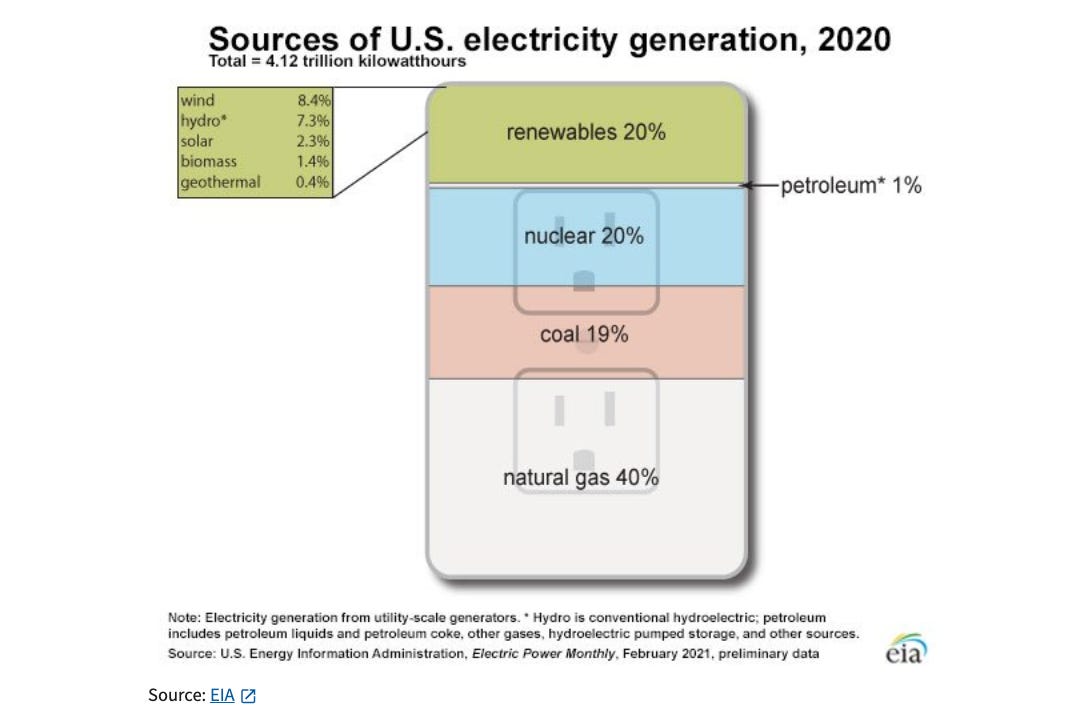
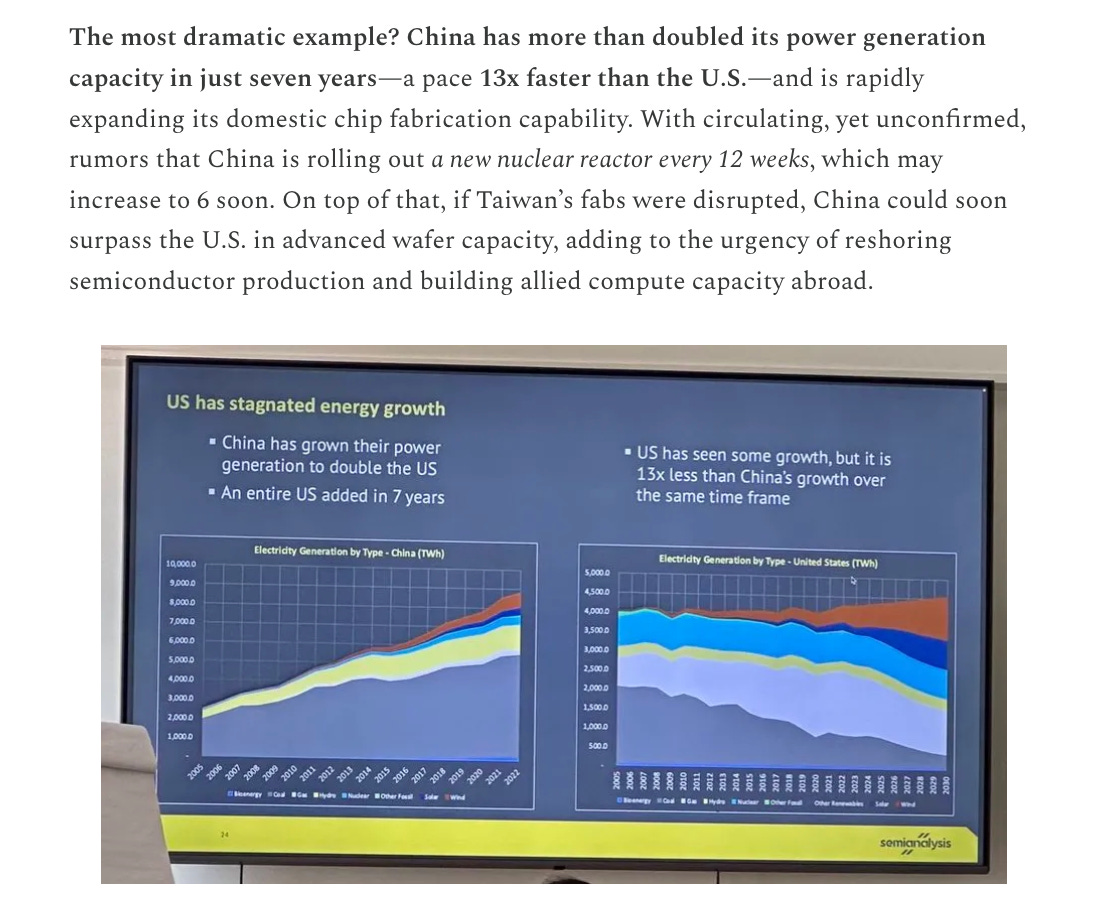
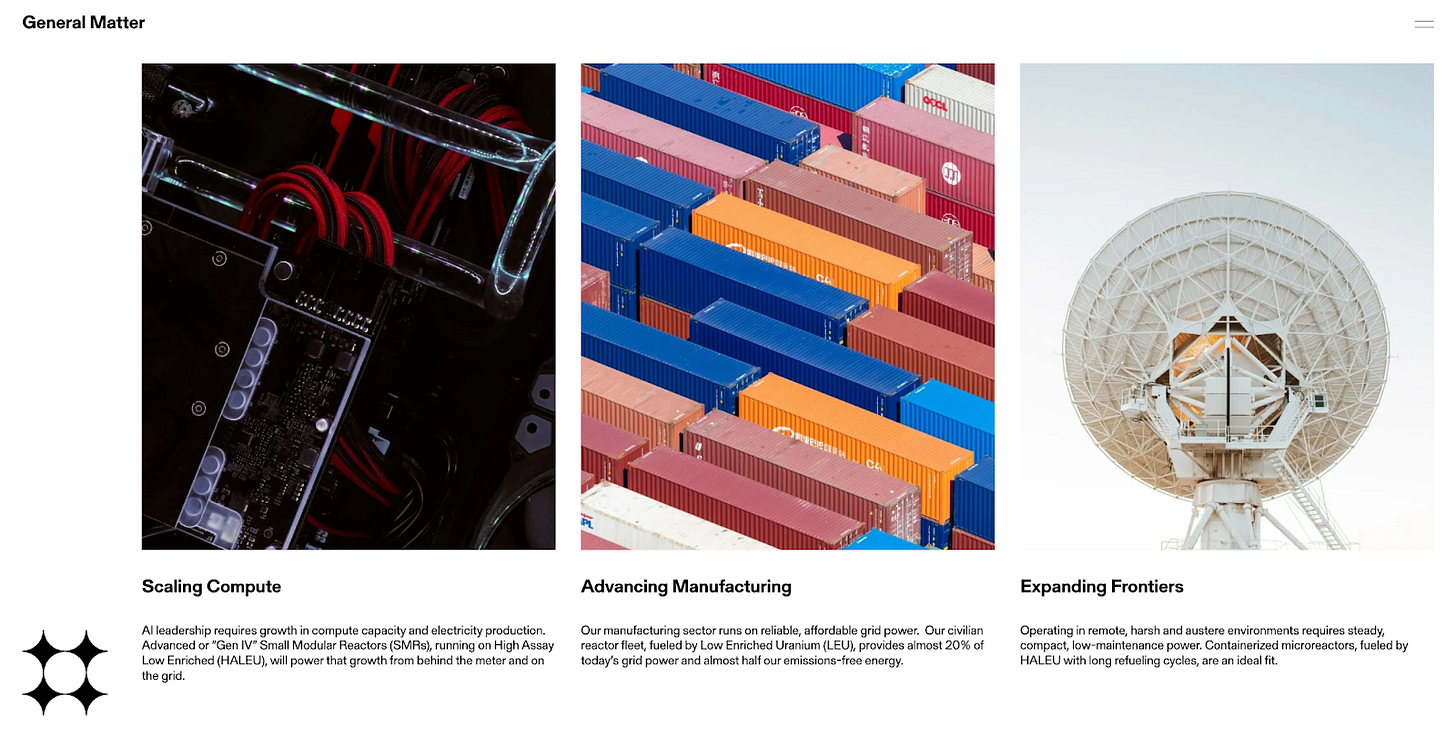
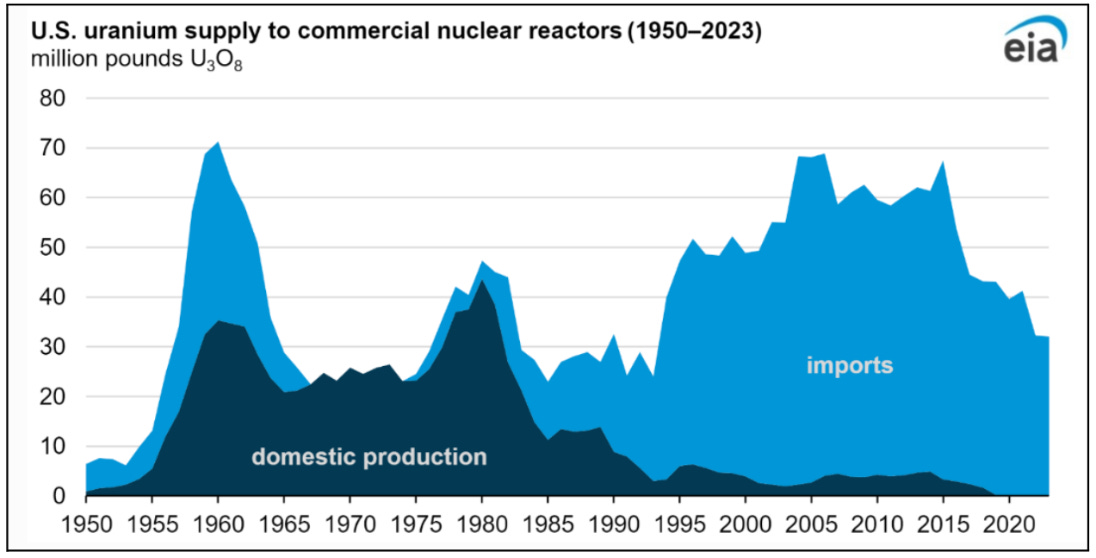
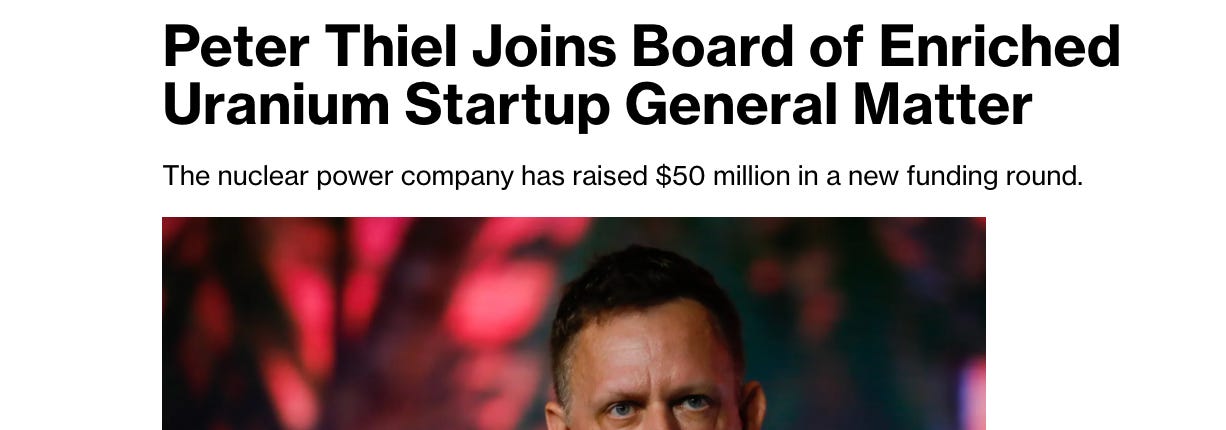
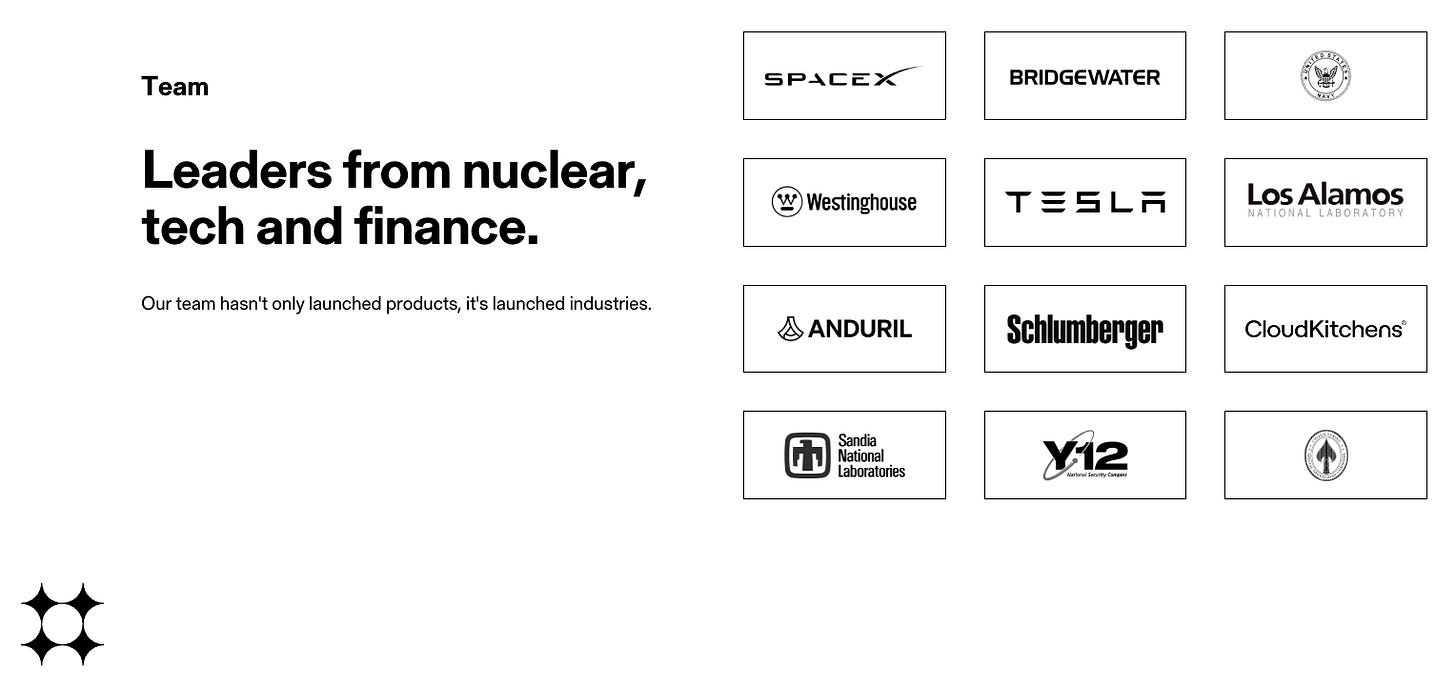
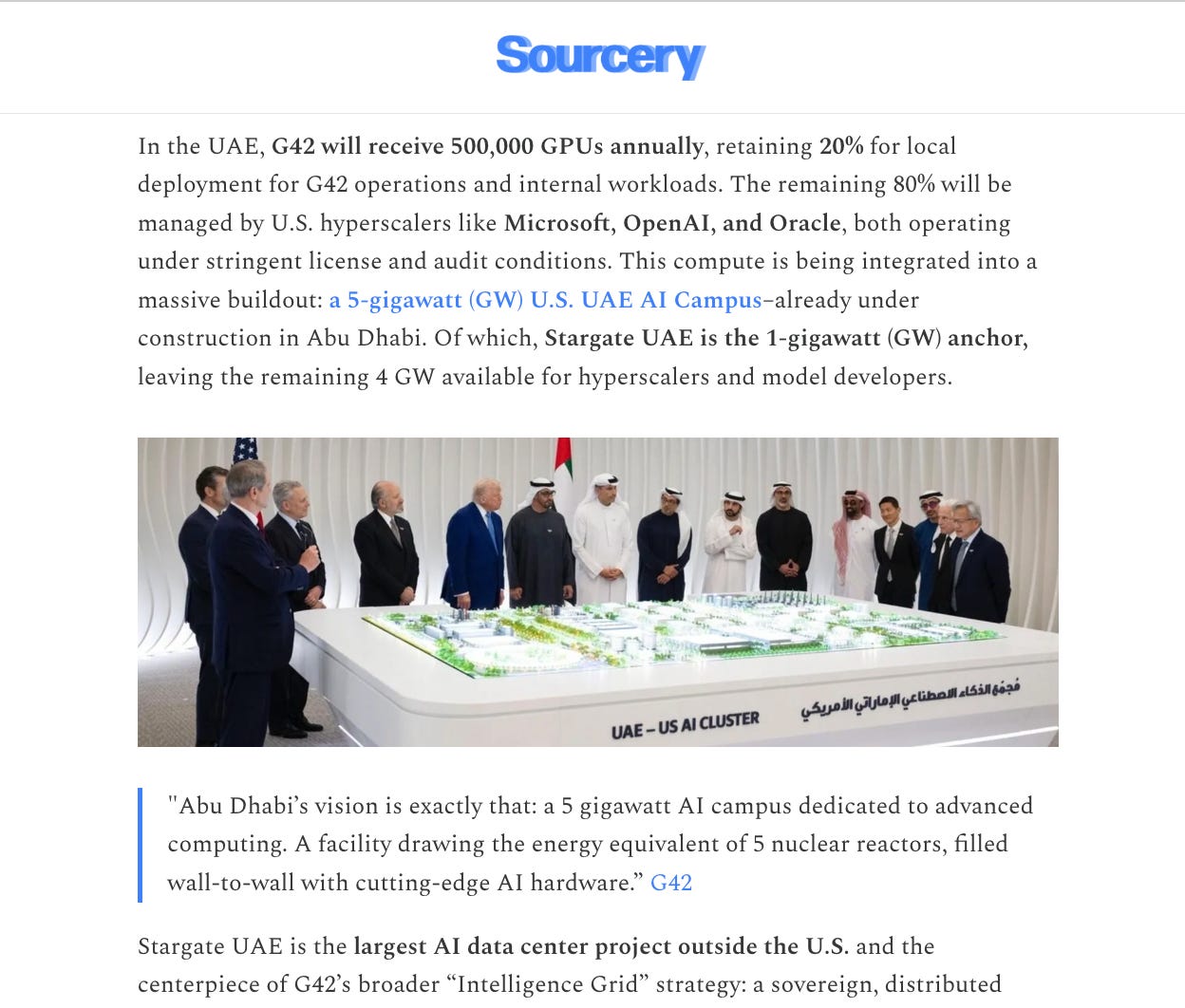


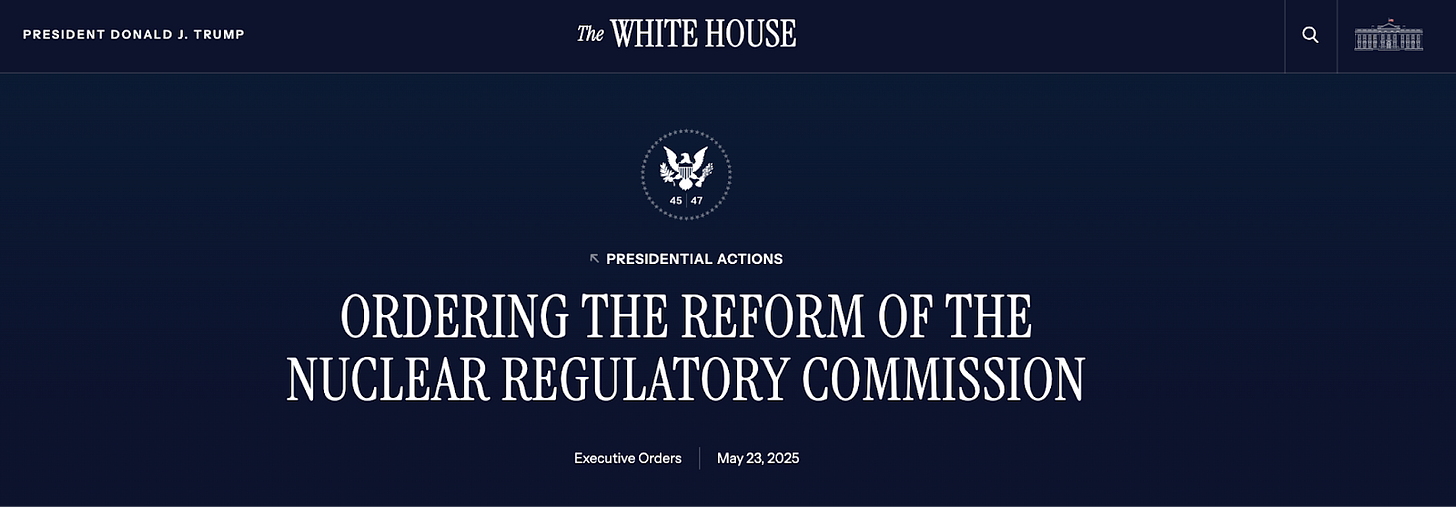
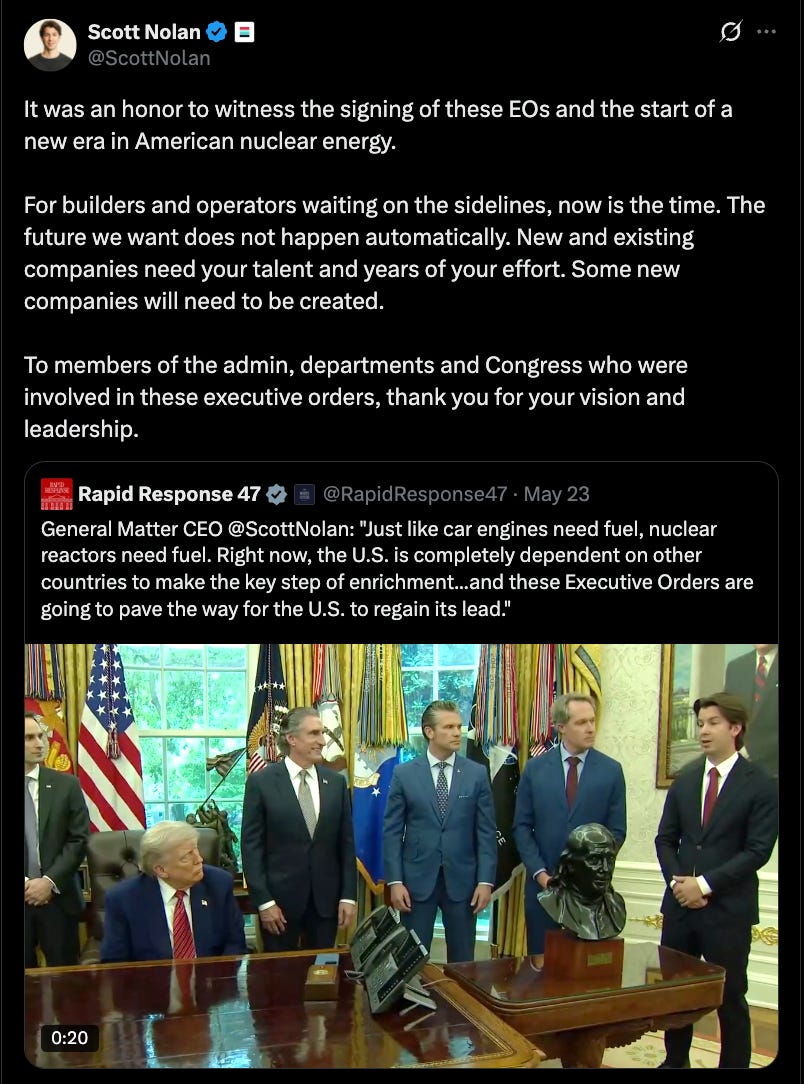
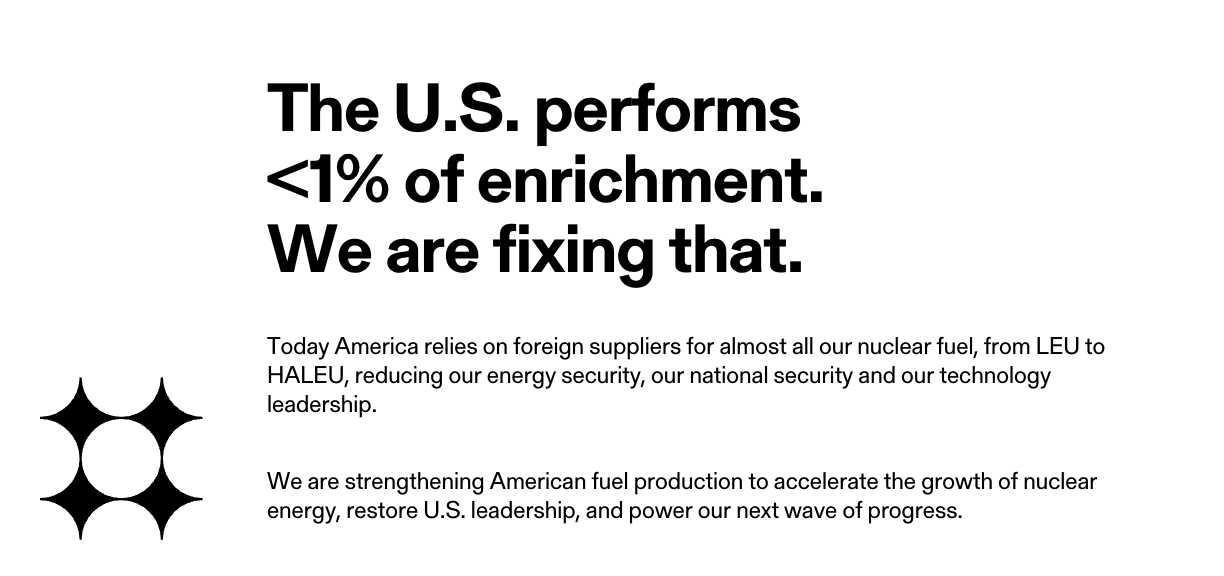

Fascinating to watch the nuclear buildout, especially if we’re hitting 4x capacity by 2050.